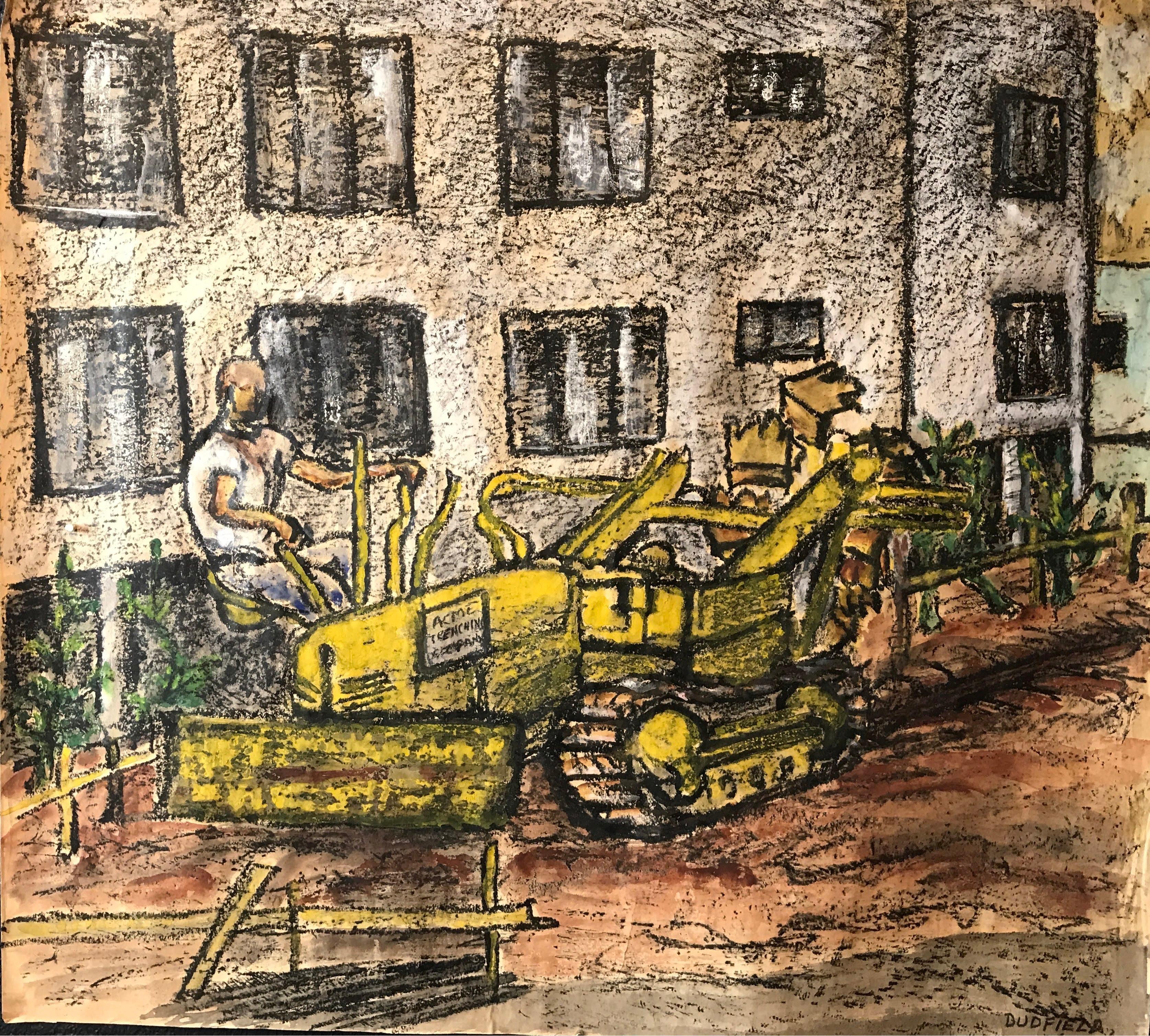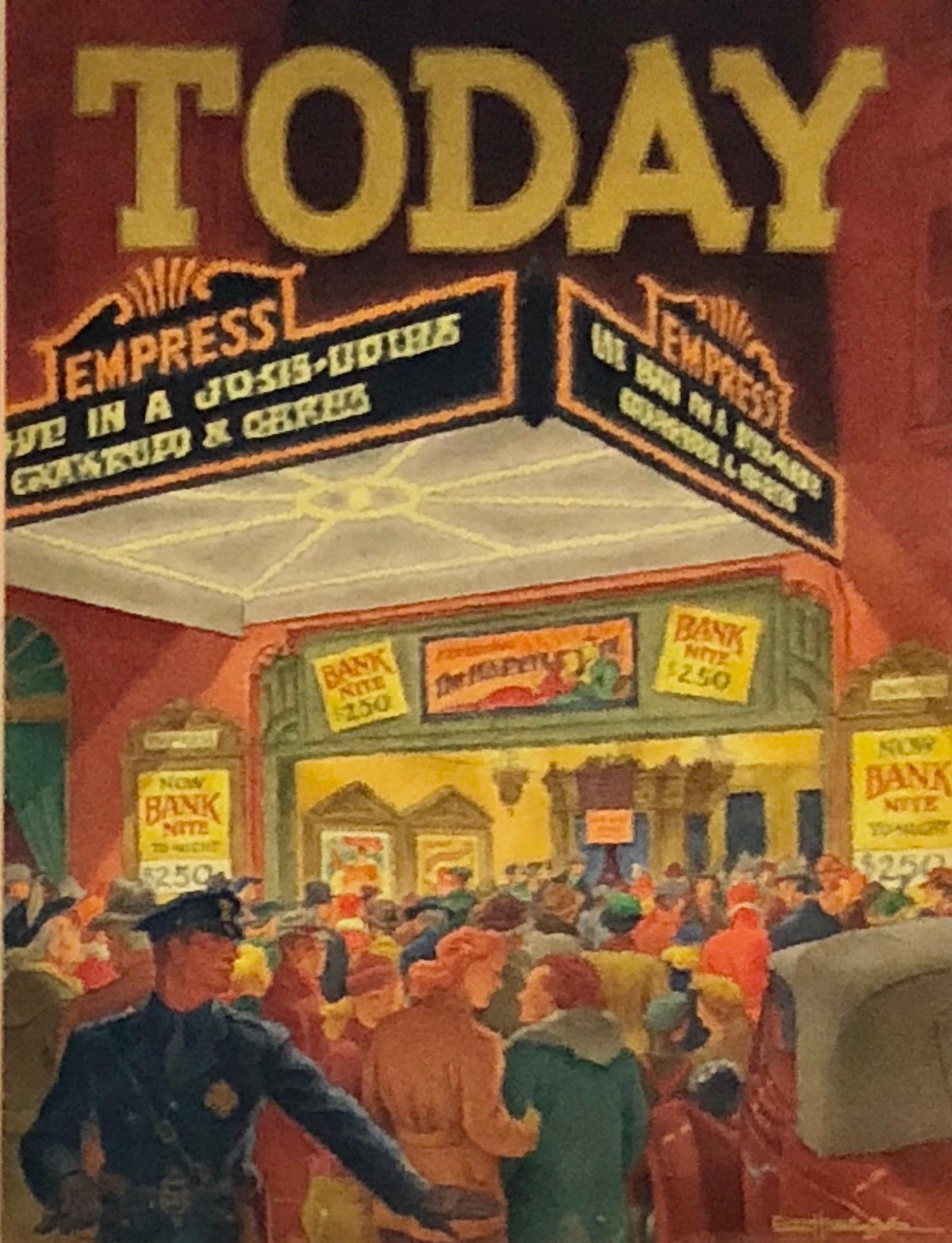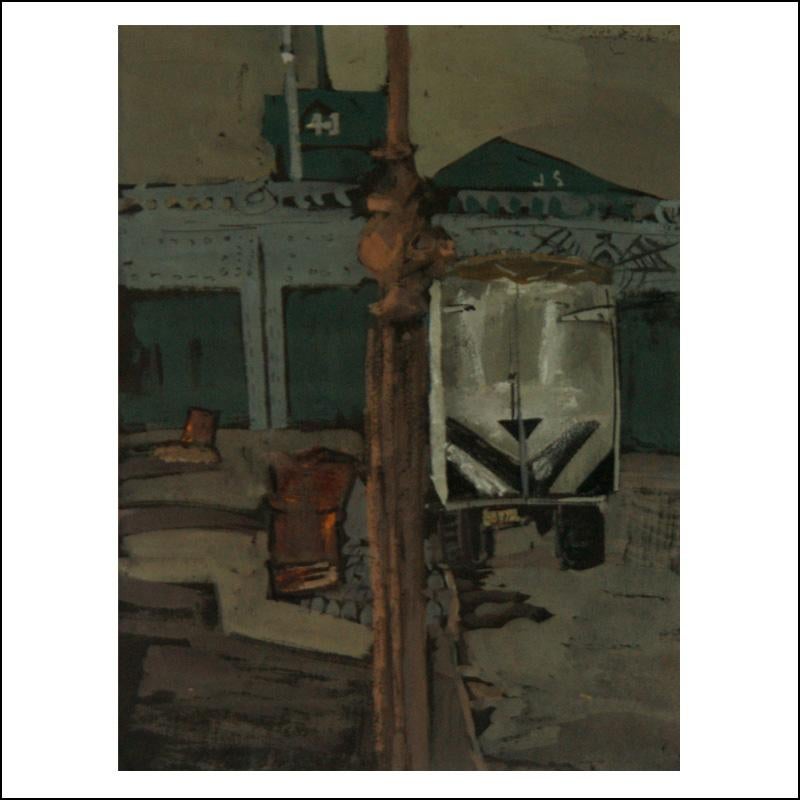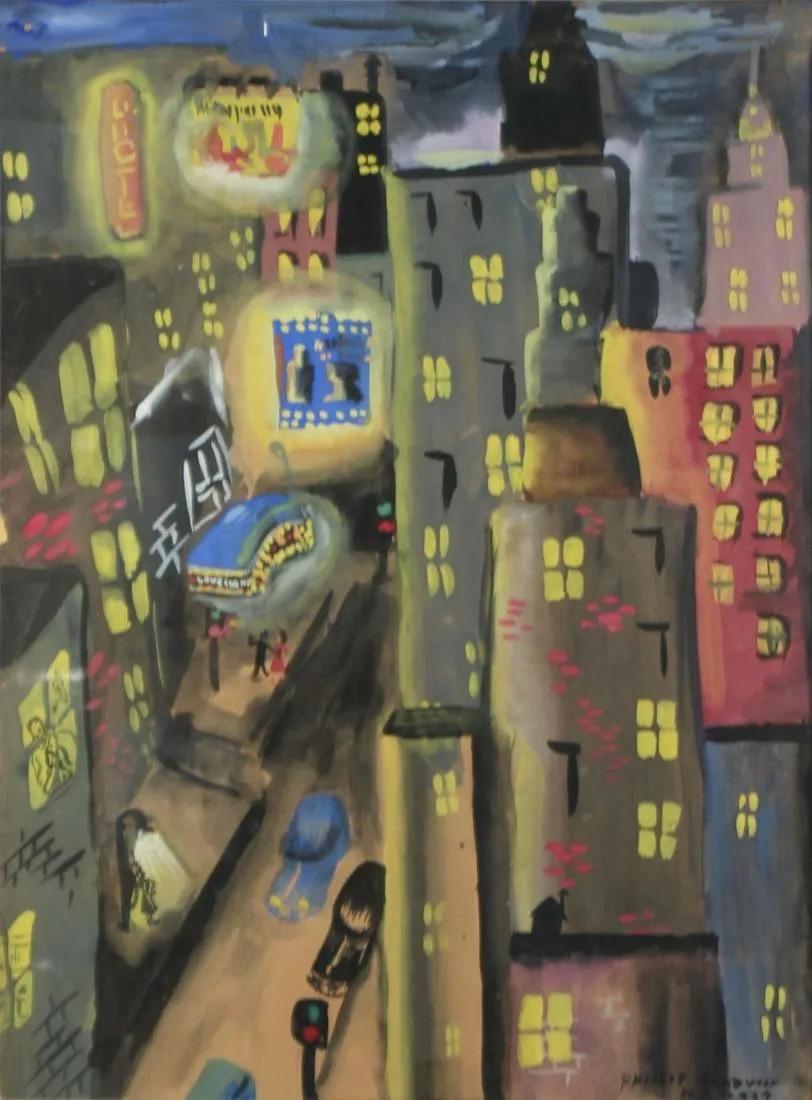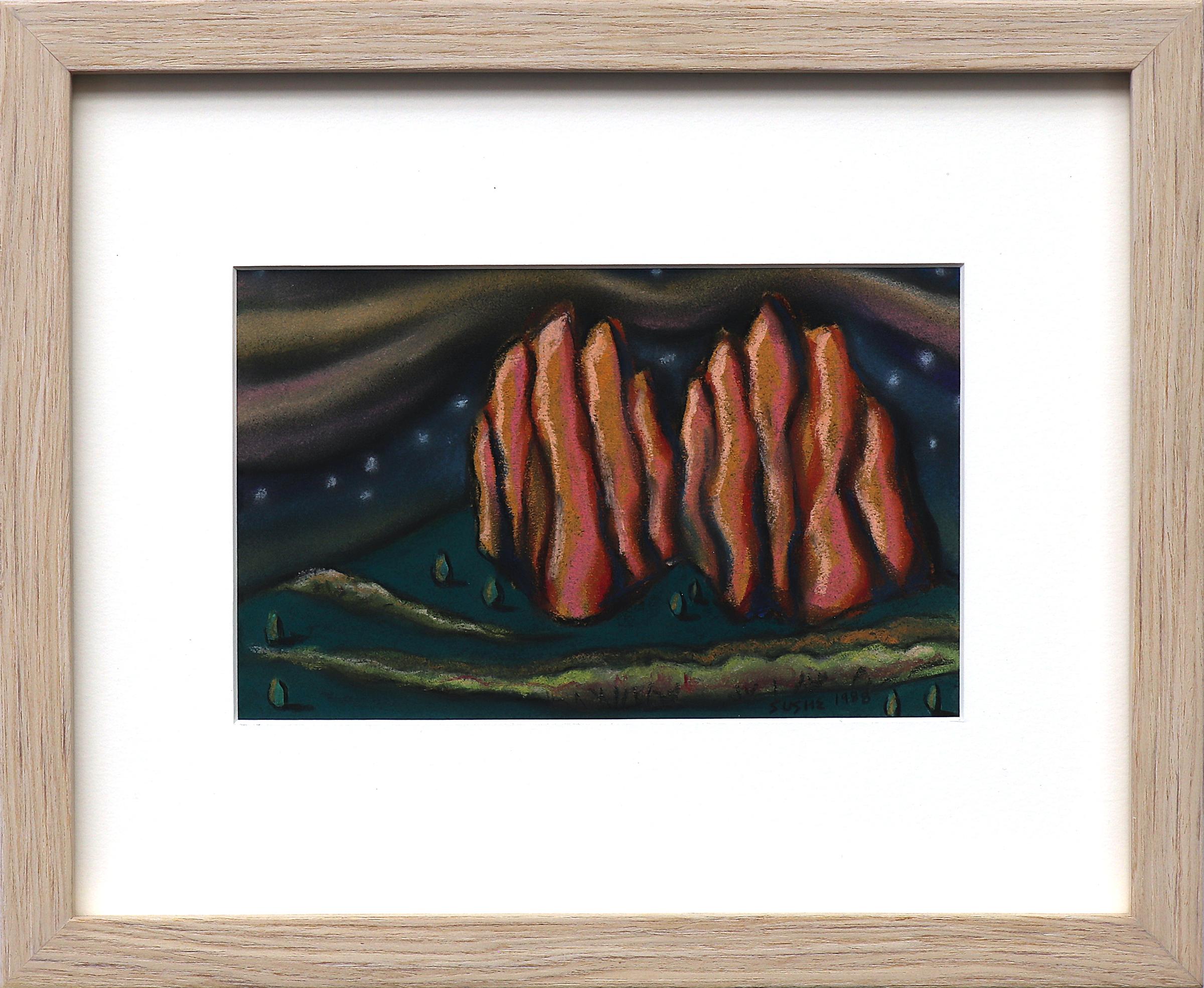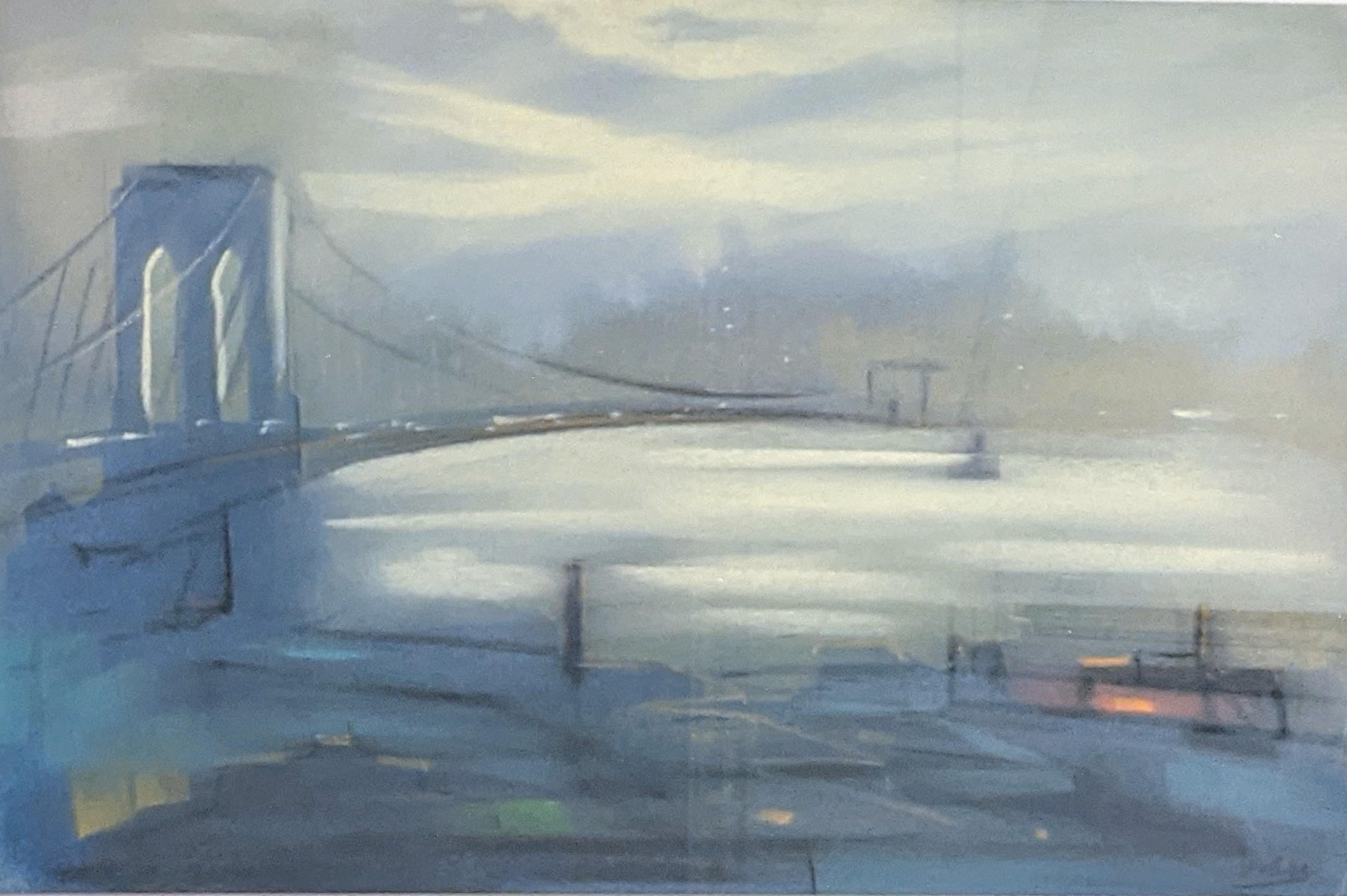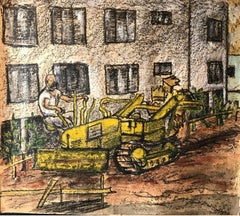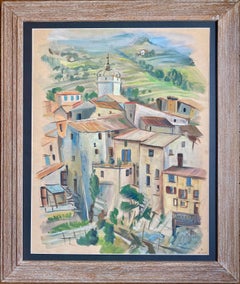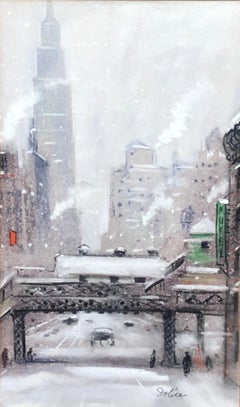
EMPIRE STATE BUILDING Drawing Modern Modernism WPA Mid-Century NYC
View Similar Items
Want more images or videos?
Request additional images or videos from the seller
1 of 6
Leon DoliceEMPIRE STATE BUILDING Drawing Modern Modernism WPA Mid-Century NYC 1940s
1940s
About the Item
- Creator:Leon Dolice (1892 - 1960, American, Austrian)
- Creation Year:1940s
- Dimensions:Height: 18 in (45.72 cm)Width: 13 in (33.02 cm)
- Medium:
- Movement & Style:
- Period:
- Condition:
- Gallery Location:New York, NY
- Reference Number:1stDibs: LU115625029392
About the Seller
5.0
Platinum Seller
These expertly vetted sellers are 1stDibs' most experienced sellers and are rated highest by our customers.
Established in 2008
1stDibs seller since 2019
163 sales on 1stDibs
More From This SellerView All
- Magazine Cover Illustration Mid 20th Century Modern Theatre Broadway Realism WPABy Ernest Hamlin BakerLocated in New York, NYMagazine Cover Illustration Mid 20th Century Modern Theatre Broadway Realism WPA Ernest Hamlin Baker (1889 – 1975) “Today Magazine” Cover ...Category
1930s American Modern Figurative Drawings and Watercolors
MaterialsPaper, Ink, Watercolor, Gouache
- "Rail Yard" Urban Industrial WPA American Scene Drawing NYC Mid-CenturyBy Joseph SolmanLocated in New York, NY"Rail Yard" Urban Industrial WPA American Scene Drawing NYC Mid-Century. Initialed "JS" upper right Solman was a pivotal figure in the development of 20th century American art. He ...Category
1930s American Modern Landscape Drawings and Watercolors
MaterialsPaper, Gouache
- "Times Square" Mid 20th Century 1937 Modernism Broadway Drawing NYC CityscapeLocated in New York, NY"Times Square" Mid 20th Century 1937 Modernism Broadway Drawing NYC Cityscape Philip Goodwin (20th Century) "Times Square," 23 ½ x 17 ¼ inches. Gouache...Category
1930s American Modern Landscape Drawings and Watercolors
MaterialsPaper, Gouache
- "NY Street Signs" Mid-20th Century WPA 1938 Modernist Abstract Realism Pop ArtBy Stuart DavisLocated in New York, NY"NY Street Signs" Mid-20th Century WPA 1938 Modernist Abstract Realism Pop Art Stuart Davis (American, 1892-1964) "Street Signs" Modernist gouache and traces of pencil on paper in t...Category
1930s American Modern Abstract Drawings and Watercolors
MaterialsPaper, Gouache, Pencil
- House Beautiful Cover Proposal. American Scene Social Realism Industrial WPABy Antonio PetruccelliLocated in New York, NYHouse Beautiful Cover Proposal. American Scene Social Realism Industrial WPA Antonio Petruccelli (1907 – 1994) Mixing Mortar 12 1/2 X 14 3/4 inche...Category
1930s American Modern Figurative Paintings
MaterialsGouache, Board
- Original Painting. Fortune Cover. Sept 1933 Illustration American Modern WPA EraBy Antonio PetruccelliLocated in New York, NYOriginal Painting. Fortune Cover. Sept 1933 Illustration American Modern WPA Era Antonio Petruccelli (1907 - 1994) Wild Horses & Dynamo Fortune cover published, September 1933 13 X ...Category
1930s American Modern Animal Paintings
MaterialsGouache, Board
You May Also Like
- 1964 San Francisco Construction Site Large Gouache and Pastel LandscapeBy Gloria DudfieldLocated in Arp, TXGloria Dudfield Tractor at Work 6-10-64 Gouache and Oil Pastel on Paper 36"x32 1/2" Unframed Signed and dated lower right in crayon Very Good Condition - Minor wear consistent with ...Category
1960s American Modern Mixed Media
MaterialsPaper, Oil Pastel, Gouache
- "Winter Wonderland (Snowman, Pine Tree, Rabbit), " signed by Sylvia SpicuzzaBy Sylvia SpicuzzaLocated in Milwaukee, WI"Winter Wonderland (Snowman, Pine Tree, Rabbit)" is a gouache and collage on paper bag signed by Sylvia Spicuzza. A winter scene showing a happy snowman that was created with arms up in the air and a top hat upon his head. In the foreground sits a bunny looking at the snow man...Category
1950s American Modern Landscape Drawings and Watercolors
MaterialsPaper, Gouache
- African American Woman artist Mailou Jones Cezannian Cote d'Azur cubist villageLocated in Norwich, GBIf you are interested in African American Art and in Women in the Arts, I will certainly not need to introduce Lois Mailou Jones (1905-1988). Often associated with the Harlem Renaiss...Category
Mid-19th Century American Modern Landscape Drawings and Watercolors
MaterialsWatercolor, Gouache, Handmade Paper
- Beautiful large impressionist pastel by Francesco SpicuzzaBy Francesco SpicuzzaLocated in Larchmont, NYFrancesco Spicuzza (American, 1883-1962) Untitled Landscape, 20th century Pastel on paper Sight size: 24 x 30 in. Framed: 26 1/4 x 32 3/8 in. Signed lower right: Spicuzza Italian-born Francesco Spicuzza was primarily a Wisconsin painter who did portraits, still-lives and local landscapes. He spent the first part of his life in near-poverty to become a painter. An eternal optimist, in 1917, the artist reported: "I am happy and my only ambition now is to paint better and better until I shall have reached the measure of the best of which I am capable." (Spicuzza, 1917, p. 22). His predilection for beach scenes germinated early: reportedly, the five-year-old boy first drew the outlines of his father's fishing boat in the sand on the seashore near their home in Sicily. After setting himself up as a fruit peddler in Milwaukee, Spicuzza's father sent for his family when Francesco was eight years old. For the following six years the boy was unable to attend school because of his job in his father's fruit and vegetable business. The poor lad suffered a caved-in shoulder from carrying a heavy wooden crate. The young Spicuzza was aided by moral and financial support from a sympathetic Milwaukee businessman named John Cramer, publisher and editor of the Evening Wisconsin, who raised Spicuzza's salary as a newspaper assembler so that he could attend school. In 1899 or 1900, Spicuzza began studying drawing and anatomy under Robert Schade (1861-1912), a painter of panoramas who had been trained in Munich under Carl Theodor von Piloty. Spicuzza was also taught by Alexander Mueller (1872-1935), a product of the Weimar and Munich academies. Mueller realized Spicuzza was a colorist and encouraged that orientation (Madle, 1961). Spicuzza found it beneficial to accept an apprenticeship in a lithographic studio for $8 a week, which demanded most of his time. During the St. Louis Universal Exposition in 1904, still a struggling student, Spicuzza attended the fair, thanks to Cramer. It was not long before Spicuzza received a twenty-five dollar portrait commission, and this inaugural success led to new commissions and allowed him to continue as a painter. The earliest influences in his work appear to be from Edward H. Potthast and Maurice Prendergast, though Spicuzza never mentioned either artist. Already in August 1910, Spicuzza was described in a newspaper as "one of the most talented of Milwaukee's rising workers." He undoubtedly received lasting inspiration from his one summer study period in 1911 with John F. Carlson at the Art Students League's Summer School in Woodstock, New York. Certainly Spicuzza would have picked up spontaneity in handling the brush from Carlson. Although he executed numerous still-lives and an occasional religious work, Spicuzza is best known for his Milwaukee beach scenes populated with frolicking bathers in multi-colored attire, not unlike the images of Potthast, who used a similar technique. Many of these are small, preparatory works on canvas board executed between 1910 and 1915. Frequently with even greater animation than Potthast, Spicuzza produced moving images of youthful energy and uninhibited child's play. These beach genre scenes reflect the attitude of American impressionists who depicted the more pleasant side of life. Spicuzza manipulated a successful balance of rich pigment applied in varying degrees of impasto texture with subtle nuances of hue. Working all'aperto, he sought "the soft enticing shades of yellow, blue, green, pink and lavender . . . to get the effects of bright glistening summer air." (L.E.S., n.d.). As a painter whose color not only derived from direct observation but also from a personal theory of color symbolism, Spicuzza traded the linear approach of lithography for dynamic patches of brilliant color. Like Prendergast, he would often tilt the angle of the picture plane to bring the viewer's position above the scene. Spicuzza was unable to enter the 1913 Armory Show or the Panama-Pacific International Exposition two years later but he did submit work to the annual exhibitions of the Pennsylvania Academy of the Fine Arts and those of the Art Institute of Chicago. His first important award was the bronze medal presented by the St. Paul Institute in 1913, which was followed by the silver medal two years later. Before long, Spicuzza had acquired a greater sense of security in his profession and was described by a writer in International Studio (April 1917) as "an independent artist with an assured future. His pastels and water-colours are poetic and joyous bits of nature with a genuine out-of-door feeling." In 1918, his Spirit of Youth, exhibited at the National Academy of Design, sold for $112.50. Four years later, the artist achieved his greatest local recognition by winning the gold medal from the Milwaukee Art Institute. Spicuzza spent a great deal of time painting en plein air and by 1925 he began summering at Big Cedar Lake, near West Bend, Wisconsin to gather his subject matter. Easter Morning (1926) owes something to the Symbolist movement, with its figure of Christ appearing over a seascape. During the difficult era of the Depression, patrons came to Spicuzza's aid and during the 40s, he taught housewives, businessmen and students at the Milwaukee Art Institute, the Milwaukee Art Center, and in his private studio. In the following decade, although his kind of art was no longer popular in the "make-it-or-break-it" New York gallery world, Spicuzza enjoyed regular patronage and sales. His beach scenes became more static and he would experiment with modernist techniques. Spicuzza died at the age of seventy-eight. Sources: L.E.S., "Do Colors Change a Person's disposition? Experiments of a Milwaukee Artist...Category
20th Century American Modern Landscape Drawings and Watercolors
MaterialsPaper, Pastel
- Lovely Impressionist Coastal Scene of New York in PastelLocated in Larchmont, NYUntitled (Coastal New York) Pastel on paper 17 1/2 x 23 1/2 in. Framed: 24 1/2 x 30 in. Signed lower rightCategory
20th Century American Modern Landscape Drawings and Watercolors
MaterialsPaper, Pastel
- 1980s American Modern Pastel on Paper Depicting the Garden of the GodsBy Sushe FelixLocated in Denver, COPastel on paper drawing by Sushe Felix (20th Century) portraying an American Modernist view of Garden of the Gods Park in Colorado Springs. Presented in a custom frame with all archi...Category
1980s American Modern Landscape Drawings and Watercolors
MaterialsPaper, Pastel
Recently Viewed
View AllMore Ways To Browse
Nyc Wpa Paintings
Empire State Light
Empire State Building Painting
Greenwich Village Nyc
Leon Dolice On Sale
Walter Cecil Horsnell
Carlo Tivoli
Chagall Poppies
Henry Bayley Snell On Sale
Amy Talluto
Off White Tee
William Callow
Barber Wilsons
Albert Fitch
Emily Farish
Hutchings Watercolor
Leon Dolice On Sale
Olof Dahlstrand
